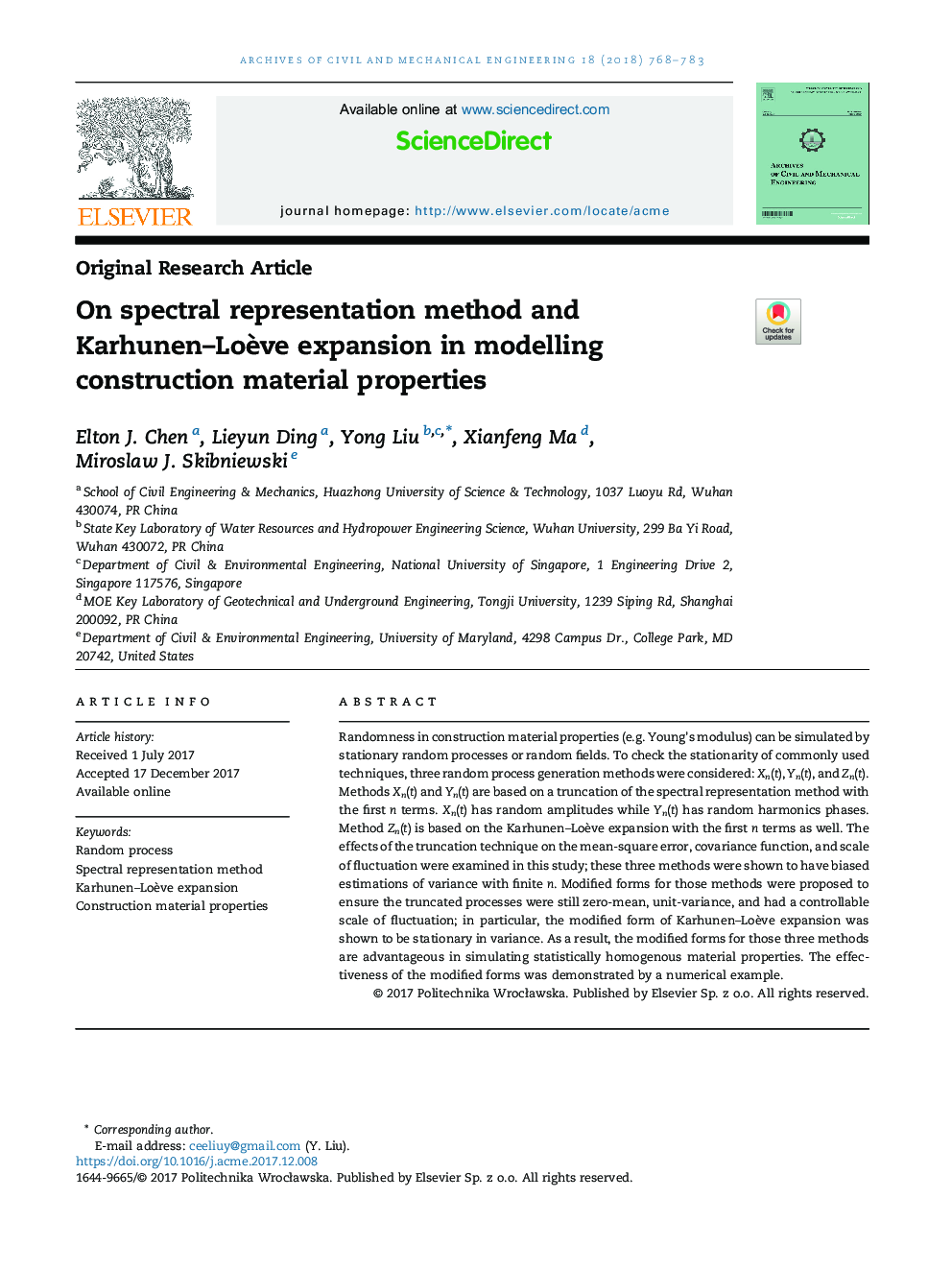| Article ID | Journal | Published Year | Pages | File Type |
|---|---|---|---|---|
| 6694580 | Archives of Civil and Mechanical Engineering | 2018 | 16 Pages |
Abstract
Randomness in construction material properties (e.g. Young's modulus) can be simulated by stationary random processes or random fields. To check the stationarity of commonly used techniques, three random process generation methods were considered: Xn(t), Yn(t), and Zn(t). Methods Xn(t) and Yn(t) are based on a truncation of the spectral representation method with the first n terms. Xn(t) has random amplitudes while Yn(t) has random harmonics phases. Method Zn(t) is based on the Karhunen-Loève expansion with the first n terms as well. The effects of the truncation technique on the mean-square error, covariance function, and scale of fluctuation were examined in this study; these three methods were shown to have biased estimations of variance with finite n. Modified forms for those methods were proposed to ensure the truncated processes were still zero-mean, unit-variance, and had a controllable scale of fluctuation; in particular, the modified form of Karhunen-Loève expansion was shown to be stationary in variance. As a result, the modified forms for those three methods are advantageous in simulating statistically homogenous material properties. The effectiveness of the modified forms was demonstrated by a numerical example.
Related Topics
Physical Sciences and Engineering
Engineering
Civil and Structural Engineering
Authors
Elton J. Chen, Lieyun Ding, Yong Liu, Xianfeng Ma, Miroslaw J. Skibniewski,
